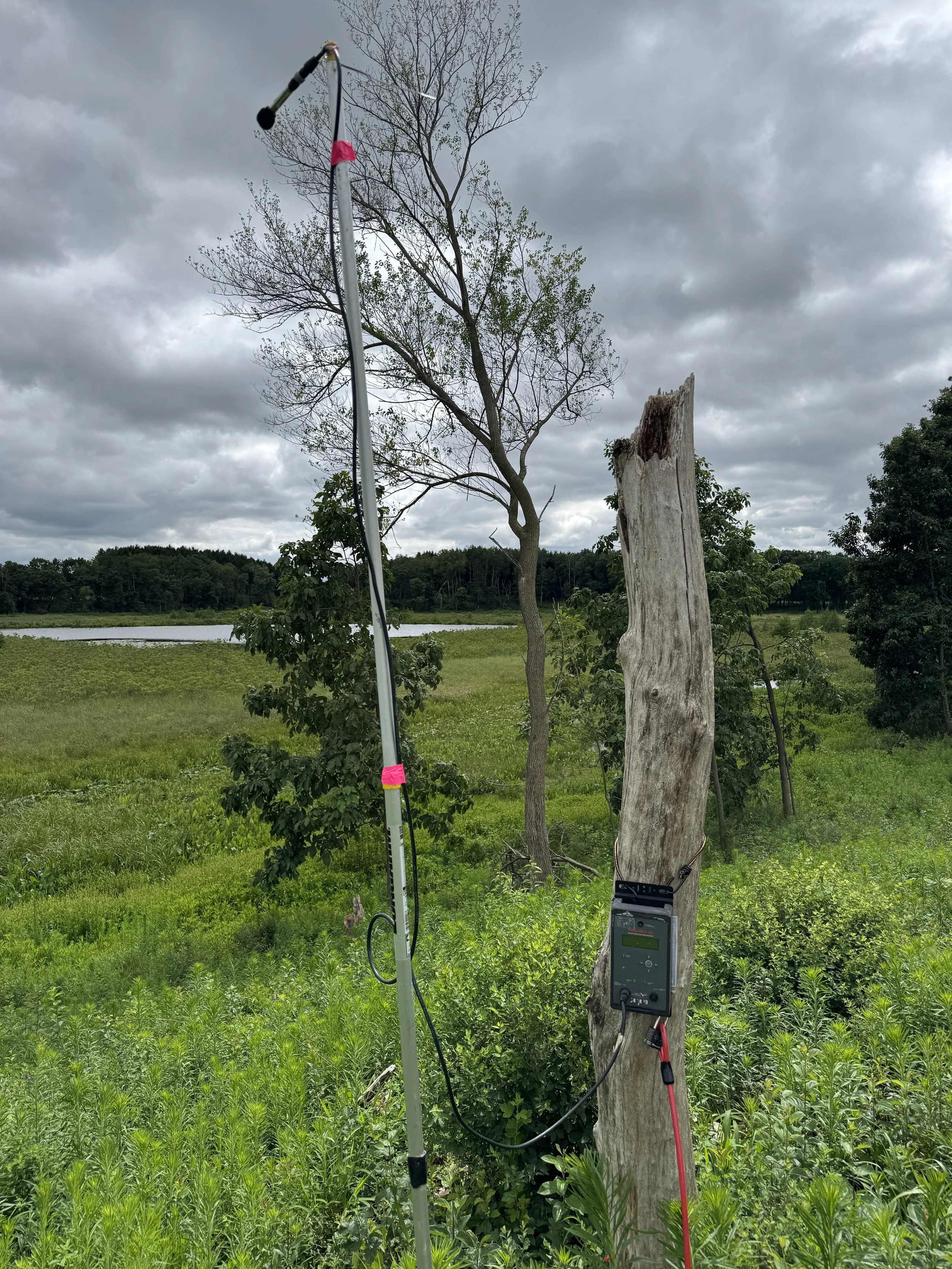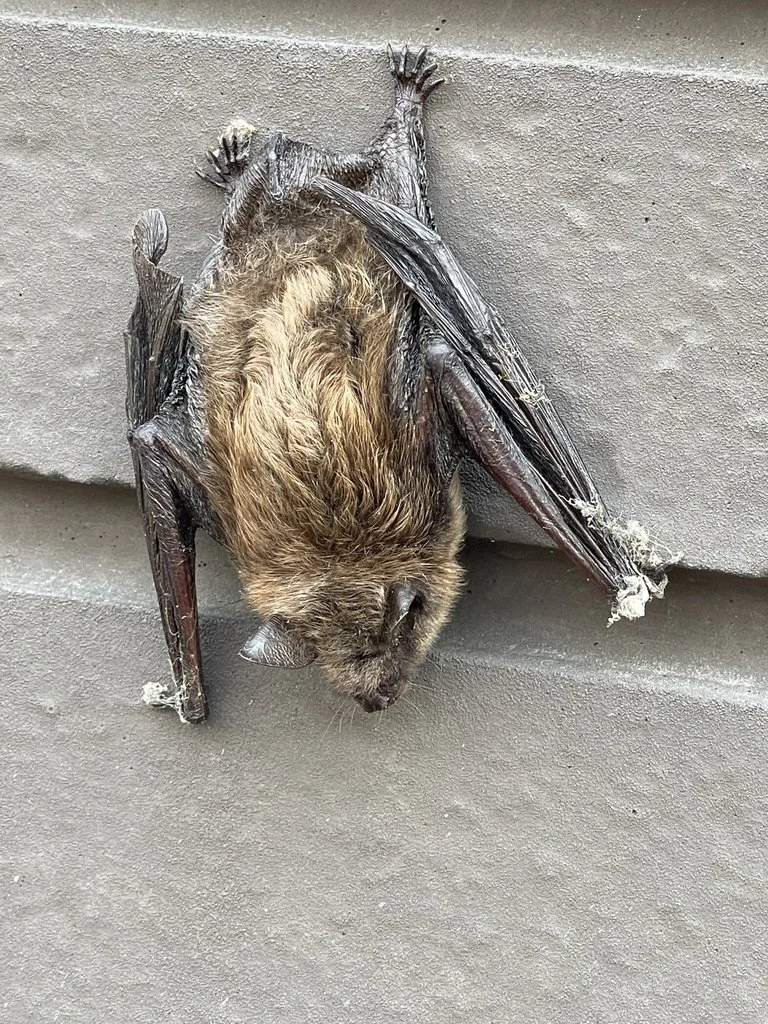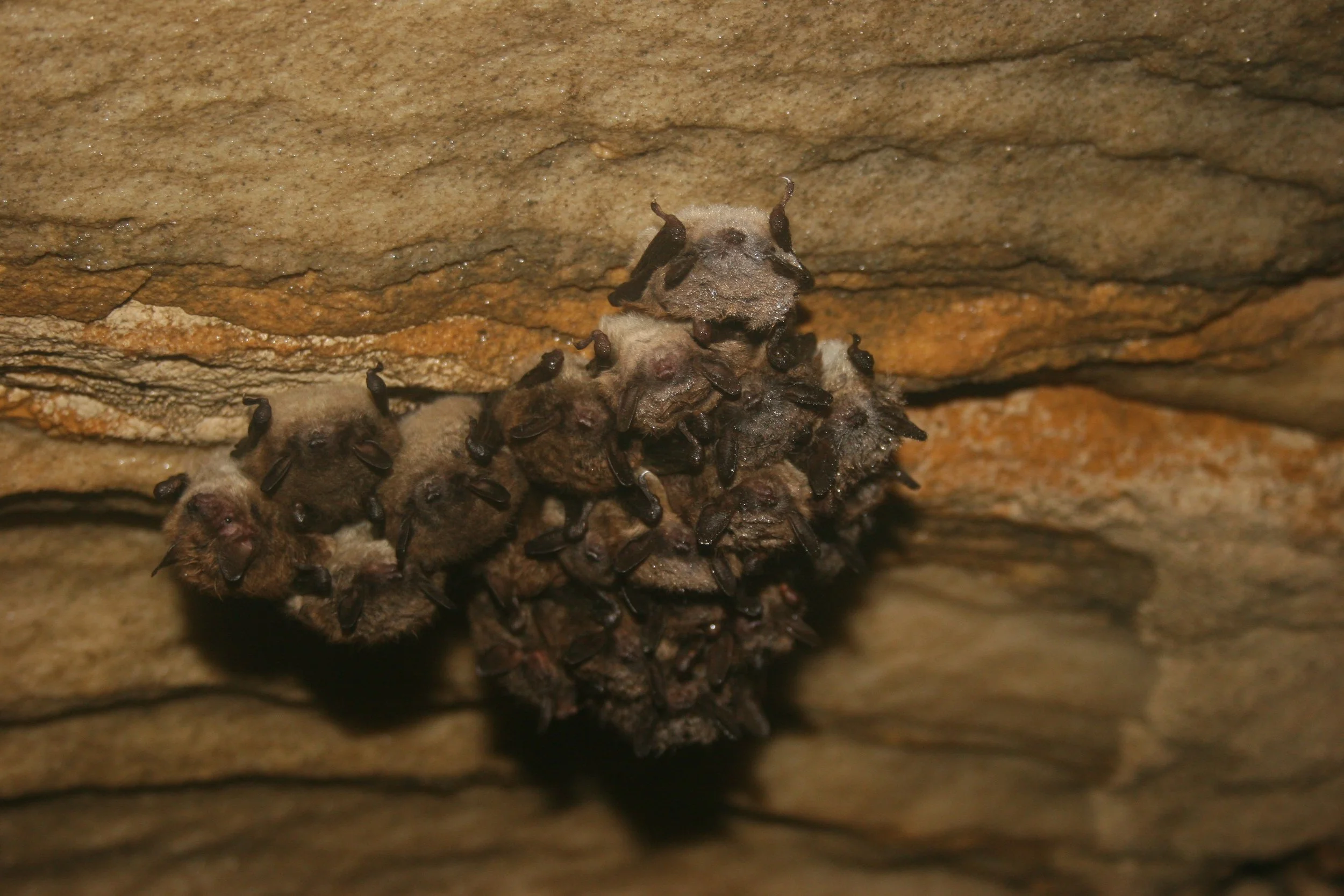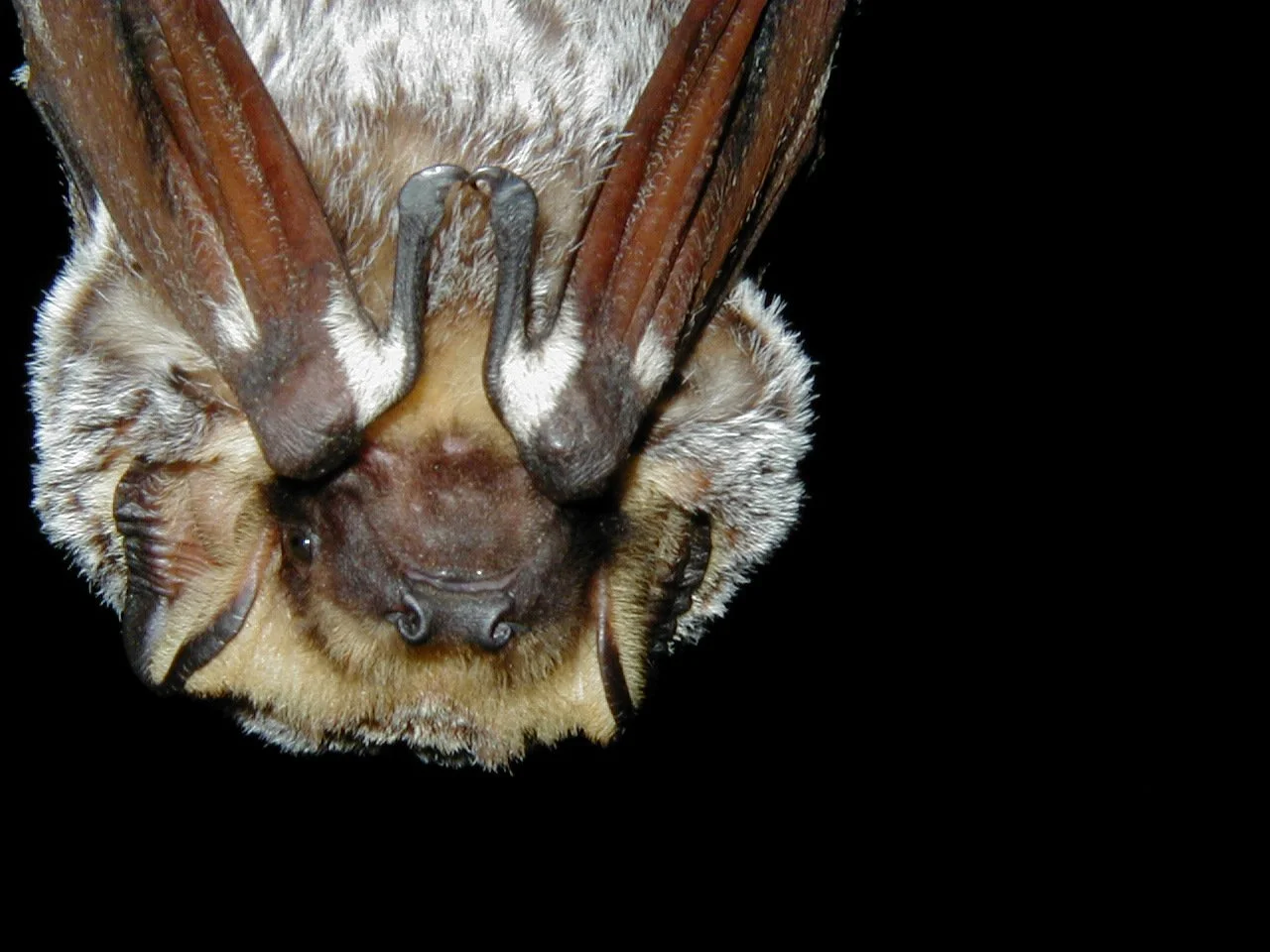This summer, Faville Grove Sanctuary partnered with the Wisconsin DNR as part of the Wisconsin Bat Program to learn more about the bat species using our landscapes and what their presence reveals about our restoration progress.
Although these mammals are active long after sunset, monitoring technology makes it possible to detect their activity and understand the important roles they play in local ecosystems. They serve as bioindicators, reflecting changes in insect populations, water quality, and overall habitat condition. Unfortunately, bats face serious challenges. White-nose syndrome, first detected in Wisconsin in 2014, has caused catastrophic losses in cave-hibernating species. Habitat fragmentation, pesticide use, and wind turbine collisions also pose threats. Surveys like this one help conservationists monitor population trends and guide management strategies to protect these vulnerable species.
A detector set up at Faville Grove Sanctuary’s Kettle Pond in summer 2025 (photo by Jeff Steele/SoWBA).
DNR mammal ecologist J. Paul White conducted an acoustic monitoring survey across four Faville Grove sites—Kettle Pond Prairie, Fat Goose Prairie/Springer Pond, Martin/Tillotson Prairies, and the Peninsula Woods in theNorth Shore Moraine. All detectors were installed near wetlands or wooded edges, where bats are most likely to hunt insects. Each detector recorded ultrasonic echolocation calls for six nights and the data were later analyzed to identify the species present.
A total of 1,659 bat calls were recorded. The results revealed a diverse and active community of bats using the sanctuary’s combination of wetlands, prairie, and savanna—habitats that together provide abundant insect prey and suitable roosting structures. Of Wisconsin’s eight known bat species, five were confirmed at Faville Grove. Each one contributes uniquely to the health of the ecosystem and tells part of the story of how wildlife uses our landscape.
Big Brown Bat (Eptesicus fuscus)
Big brown bat (photo by Jeff Steele)
The big brown bat was the most frequently detected species at all monitoring sites. It is one of Wisconsin’s most adaptable bats, capable of roosting in tree cavities, barns (including the sanctuary seed barn), and even attics. Its large size, strong flight, and tolerance for human-altered landscapes make it a key species in both natural and developed environments.
Ecologically, big browns are insect-control specialists feeding on beetles, moths, and agricultural pests. Their abundance at Faville Grove reflects the sanctuary’s healthy insect populations and the availability of roost sites across open habitats and woodland edges. The big brown bat’s success also offers hope that some species can persist even amid widespread environmental change.
Little Brown Bat (Myotis lucifugus)
A cluster of little brown bats in a cave (photo by Keith Shannon/USFWS).
Once among the most common bats in North America, the little brown bat has declined dramatically due to white-nose syndrome, a fungal disease that devastates hibernating colonies. It is now listed as state-threatened in Wisconsin.
At Faville Grove, little brown bats were most active near the Kettle Pond, where shallow water and emergent vegetation support dense insect life. Their strong association with aquatic habitats makes them an important indicator species for water quality and wetland health. Detecting little browns here demonstrates that these wetlands continue to provide vital resources for a species still struggling to recover across much of its range.
Hoary Bat (Lasiurus cinereus)
Hoary bat (photo by Paul Cryan/USGS).
The hoary bat is Wisconsin’s largest bat, with a 16-inch wingspan and fur tipped in white, giving it a frosted appearance. Unlike most other local bats, hoary bats migrate long distances each fall—some traveling all the way to Central America—to escape northern winters.
As a long-distance migrant, the hoary bat represents the sanctuary’s connection to broader ecological networks that extend far beyond Wisconsin. It feeds mainly on moths and other flying insects and requires large tracts of forest and prairie edge to forage effectively. Its presence at Faville Grove underscores the sanctuary’s importance as both a potential breeding area and a migratory stopover site for a wide range of wildlife species.
Eastern Red Bat (Lasiurus borealis)
Eastern red bat perched in a perched in a tree amongst pinecones (photo by Andy Reago & Chrissy McClarren)
The eastern red bat is easily recognized by its reddish-orange fur, which camouflages perfectly among tree canopies and autumn leaves. Red bats roost alone, often suspended from branches, and are adapted to both forest interiors and edge habitats.
This species is an important predator of moths and leafhoppers and contributes to balancing insect populations in woodlands and savannas. Finding red bats at Faville Grove suggests that the sanctuary’s expanding oak savanna restoration is supporting species that rely on scattered trees and mixed vegetation structure.
Evening Bat (Nycticeius humeralis)
The evening bat was perhaps the most surprising detection. Historically restricted to the southern United States, it was first recorded in Wisconsin in 2016 and has since been found in limited numbers in the southern part of the state. Evening bats’ presence at Faville Grove may signal a northward range expansion, likely linked to changing climate conditions and the availability of high-quality habitat. Further surveys and possible mist-netting could help verify this finding, but even tentative evidence is notable for Jefferson County.
Of the four monitoring sites, the Peninsula Woods had the highest overall bat activity and species diversity, followed by Kettle Pond Prairie. Both sites include open water, wet meadow, and forest edge habitat—ideal conditions for foraging bats. Across all sites, big brown bats dominated detections, with hoary bats consistently second. These results emphasize that wetlands and transition zones between prairie and woodland support the greatest bat diversity and activity. The presence of little brown and evening bats near ponds, and hoary and red bats along forest edges, highlights that maintaining a mosaic of open, wooded, and wet habitats benefits a wide range of bat species.
The 2025 bat survey demonstrates that Faville Grove’s restoration efforts benefit not only birds and plants, but also these important nocturnal mammals. From migratory hoary bats to recovering little browns, each species detected represents a piece of Wisconsin’s natural heritage—and a sign of resilience in a changing landscape. Ongoing monitoring and habitat management will continue to strengthen this work, ensuring that Faville Grove remains a haven for wildlife both day and night.
Written by Jeff Steele, Faville Grove Sanctuary land steward
Cover photo by Andy Reago & Chrissy McClarren. An eastern red bat in flight.










